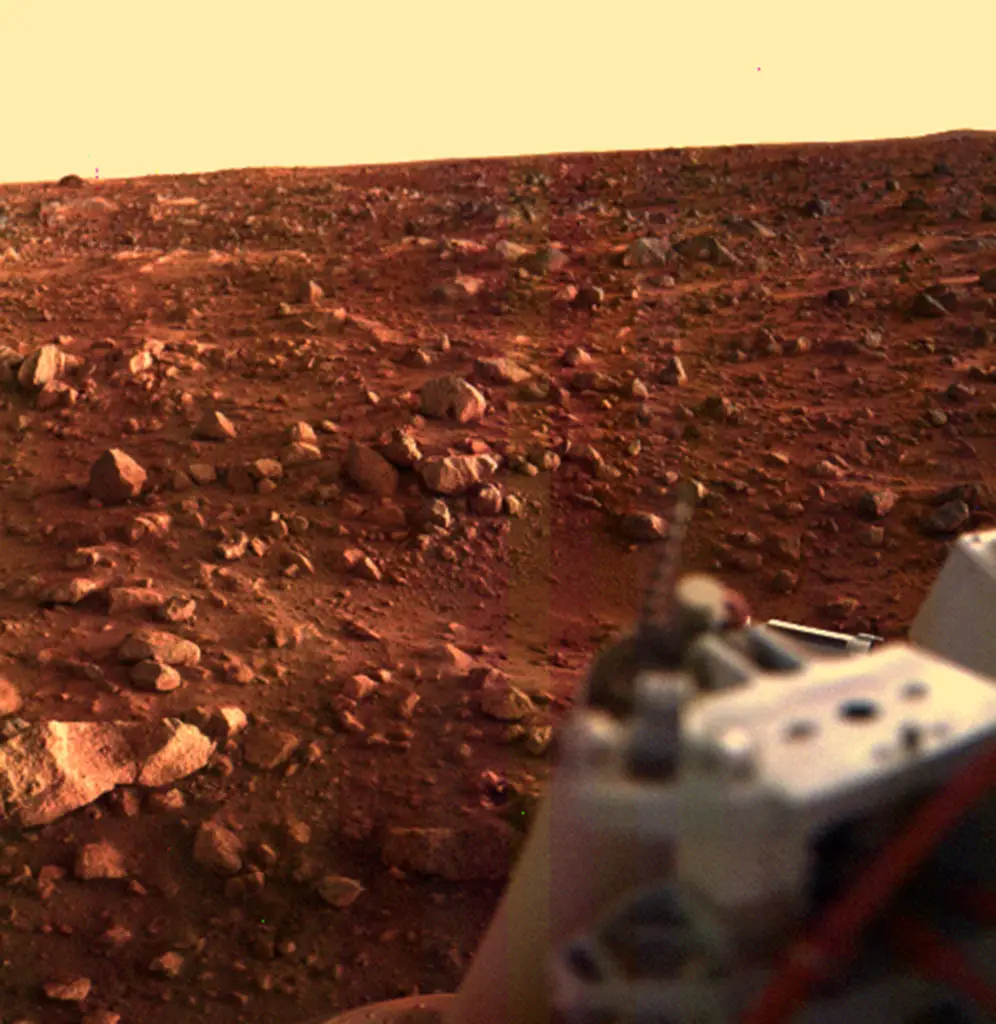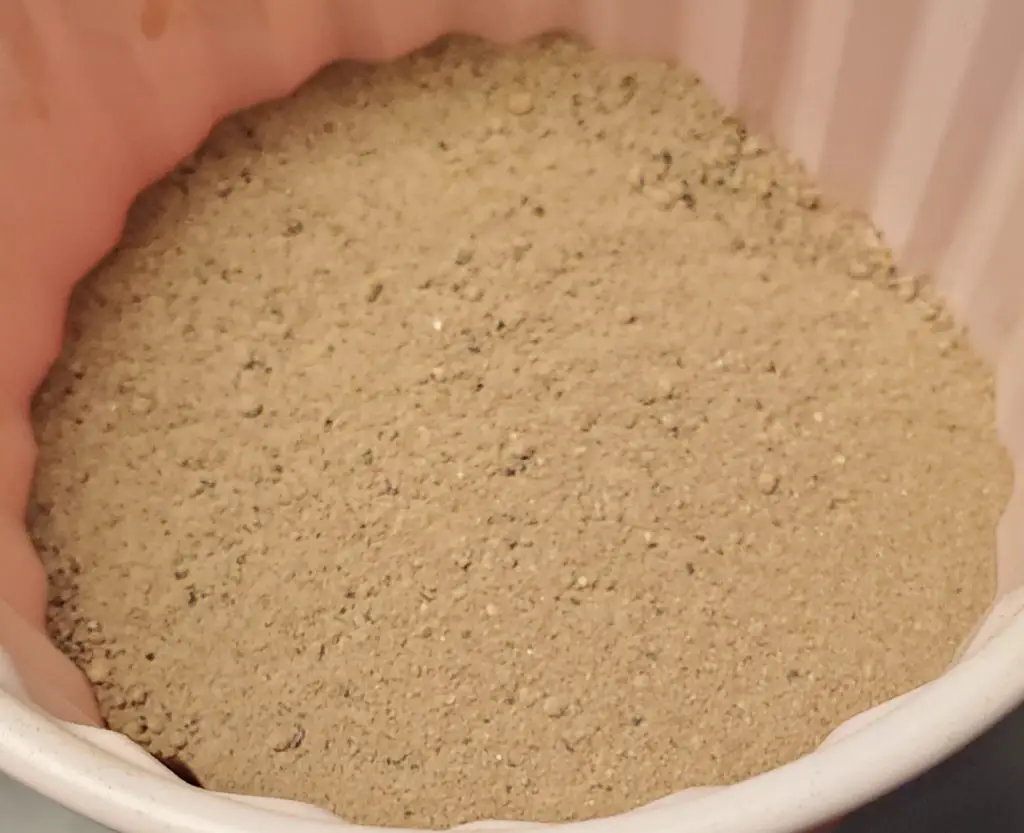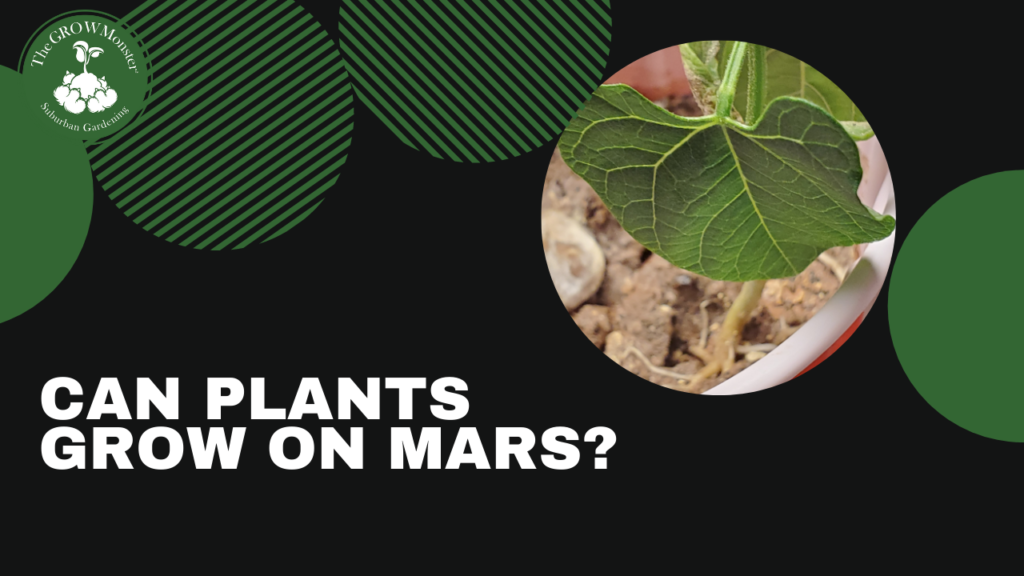The Grow Monster has been thinking about gardening concepts lately that are absolutely out of this world. As part of the Plant Mars Challenge -which The Grow Monster has happily accepted- we are actively exploring this question along with the topic of Astrobotany in general.
Can plants grow on Mars? The short answer is ‘yes’, but there are a number of conditions to be addressed in order for plants to grow there.
In this post, The Grow Monster will explore if plants can grow on Mars by addressing the following:
- Why growing plants on Mars is important.
- Requirements for Plant growth
- Synthetic Biology
- Experimenting with Regolith Simulants
- Conclusion
Why it is Important to Grow Plants on Mars
It was made clear when the president signed the White House Space Policy Directive 1 on December 11, 2017 that human expansion across the solar system will be the intention. This included long-term efforts for returning humans back to the moon for the first time since 1972 and building upon that experience for human exploration of Mars. Although the announcement on NASA’s page and the directive itself does not specify a date, The Grow Monster is finding other media sources which state that the presidential orders require landing humans on Mars by 2033. We question the validity of those media sources if NASA itself is not mentioning the date on it’s own page. In 2016, SpaceX publicly announced a comprehensive vision to begin building settlements on Mars, a two-phase mission could put people on Mars by 2026.
With that being said, we’ll need to begin studying methods and processes for growing sustainable food sources on the Moon, Mars, and beyond. There is a level of impracticality with the cost of continued resupply of food resources from Earth to other celestial bodies such as the Moon or Mars. Cargo space on space craft is preciously limited and would be better served with specialized instruments and equipment rather than for food. Therefore it is important to begin pursuing self-sustainable agriculture for self-sufficiency and human colonization of Mars.

Requirements for Plant Growth
There are a number of requirements to consider in order for plants to grow on Mars. Those include water, light, pH, nutritional, and climate requirements.
Water Requirements– From our experience here on Earth, we know plants require water. The discovery of water -in the form of ice- on the red planet also increases the possibility of pursuing self-sustainable agriculture to support life and human colonization. Plants may require less water on Mars than on Earth. This is because water will flow through Martian soil a bit differently than it does in Earth soil. Matter is three times lighter on Mars than on Earth because Mars has 38% less gravity than Earth. Therefore, Martian soil can hold more water than on earth and will drain away more slowly. Mars also has a low atmospheric pressure, therefore water will boil at around 5 degrees Celsius (41 degrees F). Contrast that with Earth where water boils at 100 degrees Celsius (212 degrees Fahrenheit). It is estimated that there is over 5 milllion cubic kilometers of water in the form of ice at or near the surface of Mars. When we eventually colonize Mars, this water will require melting. Therefore, liquid water available will be in short supply and scientists are looking at calcium perchlorates -naturally abundant on Mars- as a possible soil amendment to absorb and release water out of the air as well as give off oxygen. Not to be confused with perchlorates which are already present in Martian soil but toxic to humans. In areas on Mars where ice deposits are not readily available, more hydrogen sources (e.g., rocket fuel) will be needed to burn with oxygen to form water as was done in the movie The Martian.
Light Requirements– We also know from our experience here on Earth that plants need sun light. Plants have the unique ability of harvesting solar energy and converting that energy into sugars (carbohydrate energy source) that can be consumed by humans and other animals. Humans and animals do not have the ability to do this on their own, therefore this intrinsic relationship exists between plant and animal. Mars receives half as much sunlight as we receive here on Earth. Earth is about 93 million miles away from the sun and Mars is around 141 million miles. Therefore, with Mars being 50 million miles farther away from the sun than earth, we can see that the light on Mars is not as intense as the light experienced on Earth. Any plants grown on Mars as a food source will initially need to be supplemented with additional light sources (e.g., LED grow lamps) to ensure productive growth.
pH Requirements – Until TheGrowMonster participated in the Plant Mars Challenge, we didn’t really appreciate this thing called “pH” level. The pH is a measure of how acidic or how basic (alkaline) the water in the soil is. The pH level is measured in a range between 1.0 and 14.0. A soil pH level of 1.0 is very acidic, whereas a soil pH level of 14.0 is very basic (alkaline). For the more technical folks, it is a measure of how many relative amounts of free hydrogen and hydroxyl ions are in the water. As most average gardeners, we may have heard of the “pH level” term used in regards to acid-loving plants such as azaleas or hydrangeas, but other than that we didn’t particularly care about a soil’s pH and have taken it pretty much for granted up until now. The issue with Martian soil is the pH level. From our Plant the Mars Challenge experiment, we were unable to get a number of seeds to germinate in the variable groups we defined and were rather frustrated. We are used to popping seeds into soil and watching them grow, but not this time. We determined that the pH level of the Martian soil along with the various amendments (the variable groups) all had pH levels at least 7 or higher. Doing more homework, we learned that seeds in general prefer a slightly more acidic soil ranging between pH levels of 5.5 and 7.0 where a pH level of 7.0 is considered neutral. We also learned that plant nutrients in general need to be dissolved in a soil solution first before they can be used by plants and that is where soil pH comes in. Because most minerals and nutrients are more soluble in acidic soils, they prefer slightly acidic soils below pH levels of 7.0. At the end of the day, Martian soil will need to be amended to increase the acidity of the soil between 5.5 and 7.0 in order for seeds to germinate and for plants to access the nutrients in the Martian soil. Here on earth, we use commercial products containing sulfur or aluminum sulfate mixtures to reduce the pH levels of a soil. To reduce the pH levels more naturally, gardeners can use peat moss to reduce the pH to make it more acidic for their azaleas and hydrangeas among other acid-loving plants. TheGrowMonster has recently applied the sulfur and apple cider vinegar amendments to their variable groups in the Martian simulant soil to see if the pH lowers and the seeds germinate. Stay tuned for the results on that one.
Nutritional Requirements – Like humans, plants have nutritional requirements. There are a number of essential elements required for plant life. These elements are also found on Mars, but their availability may vary and may require extra efforts to utilize them for promoting plant life. Take water for example, most water available on mars is in the form of ice. It will need to be collected, melted and maintained in a controlled climate environment in order for it to be utilized by plant life. Another issue is gas. The Martian atmosphere contains about 95% carbon dioxide and about 2.6% nitrogen as compared to Earth containing about 78% nitrogen and 21 percent oxygen with 1% of other gases. Processes will need to be in place to splitting some of the carbon dioxide into useable oxygen for plants and humans, as well as making nitrogen available to the plants. Other elements required to sustain plant life may need to have additional processes (mechanical or chemical) applied in order to make them available as well. Those essential elements for plant life can be broken down into macronutrients and micronutrients. Macronutrients are elements that plants require in large amounts versus micronutrients which are those elements required in smaller amounts. Macronutrients ((carbon, hydrogen, oxygen – from air/water), (nitrogen, phosphorus, and potassium from soil)) and micronutrients (from soil: calcium, magnesium, sulfur, iron, manganese, zinc, copper, boron, molybdenum, and chlorine). The chart below describes these elements and their function in more detail.

Microbe Requirements – We would be remiss if we didn’t mention the need to include microbes as a requirement for plant growth on Mars. There are five different types of microbes in soil and they include bacteria, actinomycetes, fungi, protozoa and nematodes. These microbes along with some of the bigger organisms that live in the soil (e.g., worms, ants, beetles, etc) assist in decomposing organic matter in the soil and keeping the soil fertile and healthy. Here on Earth, our soils are alive with microorganisms and thus evolved an intrinsic relationship between plants and the microorganisms that live in these soils. Actinomycetes, for example, can be either good or bad for the soil. Populated with good actinomycetes in the soil, they can act as a natural antibiotic for plants. Others like protozoa consume bacteria and have excretions that become beneficial nutrients for the plant. Without a living soil environment on Mars, plants will have a more difficult time getting nutrients out of the soil. Scientists will be looking at the best ways to inoculate soils with beneficial microbes as they move forward with plans to colonize Mars.
Climate Requirements – As it is now, the current climate on Mars is not suitable to support plant or human life. It is outright cold. From the Viking mission in 1976 it recorded average temperatures between -50 to -81 degrees Fahrenheit (colder than both North/South poles on Earth). The Martian atmosphere is not as thick as the Earth atmosphere, therefore there is not as much there to insulate the planet to keep the warmth in, or filter out the ultraviolet (UV) and cosmic rays. However, with all things considered, Mars may be the closest habitable planet in our solar system besides Earth to support life. Our own climate situation here on Earth is rather unique when it comes to supporting life. If you think about it, life on our planet is existing within a relatively small window of temperatures/pressures as compared to the universe around us. And within that small window, life forms on our plant have been able to adapt when climates have pressed towards their extremes. Humans wear coats and plants alter their metabolism, flowering, growth, and dormancy during periods of colder temperatures. So some adaptation on behalf of humans will be required to colonize Mars. In order for plants to thrive on Mars and for humans to colonize it, humans will need to modify the climate. What’s that? Climate change you say? Answer: Yes. We’ll need to start burning lots of fossil fuels and create tons of industry to raise the Martian temperatures enough in order for the ice on the Martian poles to melt and provide us water. Okay, just kidding. Because they have yet to find any evidence of life on Mars (via fossils or otherwise), there are no fossil fuels to burn there. Our adaptation to Mars will require us to have installed a number of contained greenhouse structures aka ‘biospheres’ aka ‘ecospheres’ where climate temperatures and pressures can be regulated, support water in a liquid state as well as within range of supporting plant, animal, and human life.
Synthetic Biology
There is a growing field (pardon the pun) called synthetic biology that will look at adapting and modifying plant biology to the conditions on Mars. Synthetic biology – engineering of organisms that combines a number of science disciplines from genetic engineering to computer sciences in an effort to enhance them with new and improved functions that might allow them to survive harsher environments. With our understanding of DNA, we can now reengineer, design, build, and test entirely new organisms. These new organisms will be created and tested in what will be called biofoundries where millions of DNA design combinations can be tested to find the most favorable qualities in the design. In regards to Mars, biofoundaries specific to Mars will be used to design and build plants that can thrive in those conditions, be resistant to harmful UV rays with improvements in their abilities of photosynthesis, photoprotection, drought tolerance, and cold tolerance. Plants will not be the only thing to be designed and reengineered in biofoundaries. Microbes play an important symbiotic role with plants on Earth and are expected to play a similar role on Mars. They will be redesigned, developed, and tested to amend and improve the soil quality on Mars. A by-product of this field of research would be new and improved methods for designing / building food crops for people here on Earth. As the population increases, also increases the demand for food.
Experimenting with Regolith Simulants
Scientists have been interested in what it would take to grow plants in Martian surface soil or ‘regolith’. Because they do not have actual regolith samples to grow plants in, they can only go on the data received from the Mars probes over the years to make educated guesses on the composition of what those regolith soils would be. From this data they are able to make attempts to recreate or simulate Martian regolith with elements found here on Earth. They call these ‘regolith simulants’. They look at places such as Antarctica, Hawaii, and the Mojave Desert that has volcanic soils similar to regolith found on Mars. When developing the regolith for commercial study, they are leaving out what are called ‘perchlorates’ as they are dangerous to human.
When TheGrowMonster registered for NASA’s Plant Mars Challenge, it received a bag of Martian regolith simulant produced by the Exolith lab. You can learn more about the Exolith Lab by clicking here. According to the lab, the Martian regolith simulant provided was composed of the following elements:

While some individuals/schools are participating in the Plant Mars Challenge, other schools are studying the growth of plants in Martian regolith simulants on their own. For example, there is the Red Thumbs Mars Garden Project headed by Edward Guinan professor of astronomy and astrophysics. He was inspired by the NASA Vegetable Production System (Veggie) system aboard the International Space Station (ISS). They’ve identified a number of issues and work arounds to growing in the Martian simulant including using augmented sunlight with multiwavelength LEDs, amending the claylike soil with things such as worm castings, shredded cardboard and vermiculite to aid with aerating / drainage. Because soil dryness was a big issue, they determined that the humidity of a greenhouse on Mars would need to be between 50%-60% to retain the moisture.

The Grow Monster continues the Plant Mars Challenge and initial observations are leading us to believe that the higher pH levels of the regolith simulant along with the possibility of excessive salts and oxides, may be preventing seeds from germinating and/or stunting the growth of plants growing in it. The Grow Monster is looking at using water to leach the soil of harmful salts as a possible means of improving the germination and growth rates of plants in Martian regolith simulants. Learn more about our experience by going here.
Conclusion
The Grow Monster would like to conclude with ‘Yes’ plants can grow on Mars. However, plants will not be able to grow on their own there. Water sources will need to be harvested, melted, and processed. We will then need to provide a contained environment (e.g., green house) where the climate can provide the temperatures and pressures necessary to ensure water maintains a liquid form. Plants will also require a bit more light than what is already provided on Mars and supplemented with LED grow lamps for optimal growth. The soils will also need to be amended to lower pH, as well as processed to reduce the salts and perchlorates that are harmful to the humans working with it. When the salts and perchlorates have been removed, we can then add microbes and organic matter to the soil to make it come alive with nutrients for the plants that will grow in it. There will also be the advances in synthetic biology and biofoundries that may one-day enable plants and animals to live and adapt to some of the extreme environments offered by Mars. In order for us to prepare for Mars colonization, we need to be able to grow sustainable food sources on the planet itself. Using precious cargo holds on a space ship to move food items back and forth is not an efficient use of the (pardon the pun) space. Therefore, we challenge ourselves with events like Plant Mars Challenge to find ways and methods to make the dream of colonizing Mars a reality. Can plants grow on Mars? Yes, and if we are scientific about it, we can make it happen. As the character Mark Watney from The Martian movie said, “They say once you grow crops somewhere, you have officially colonized it…”


Pingback: Plant the Moon and Plant Mars Challenge with NASA - The Grow Monster
Pingback: Can Plants Grow on the Moon? - The Grow Monster